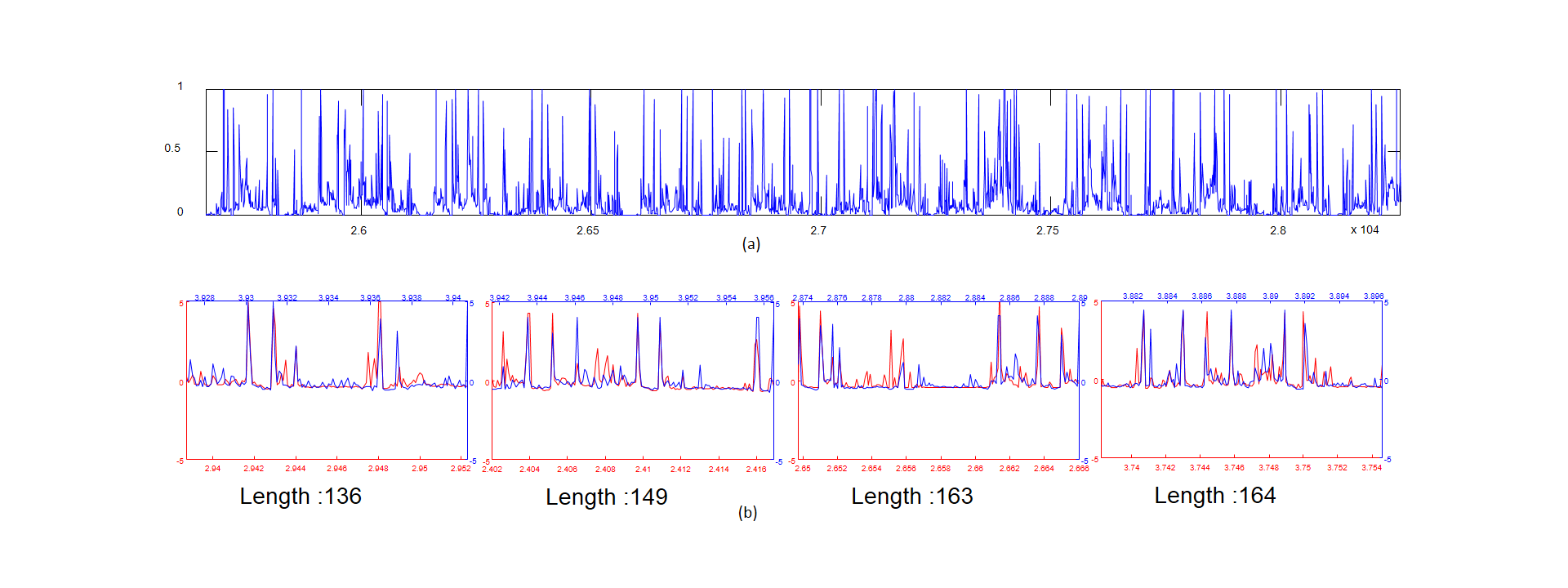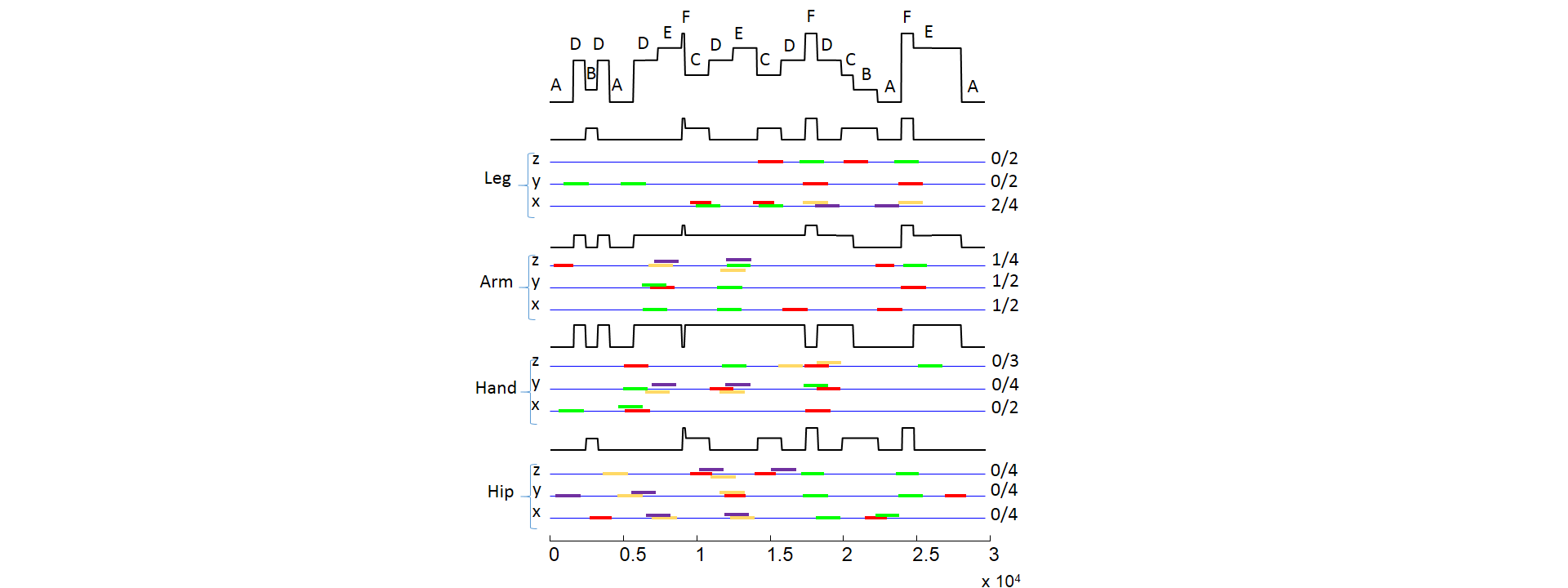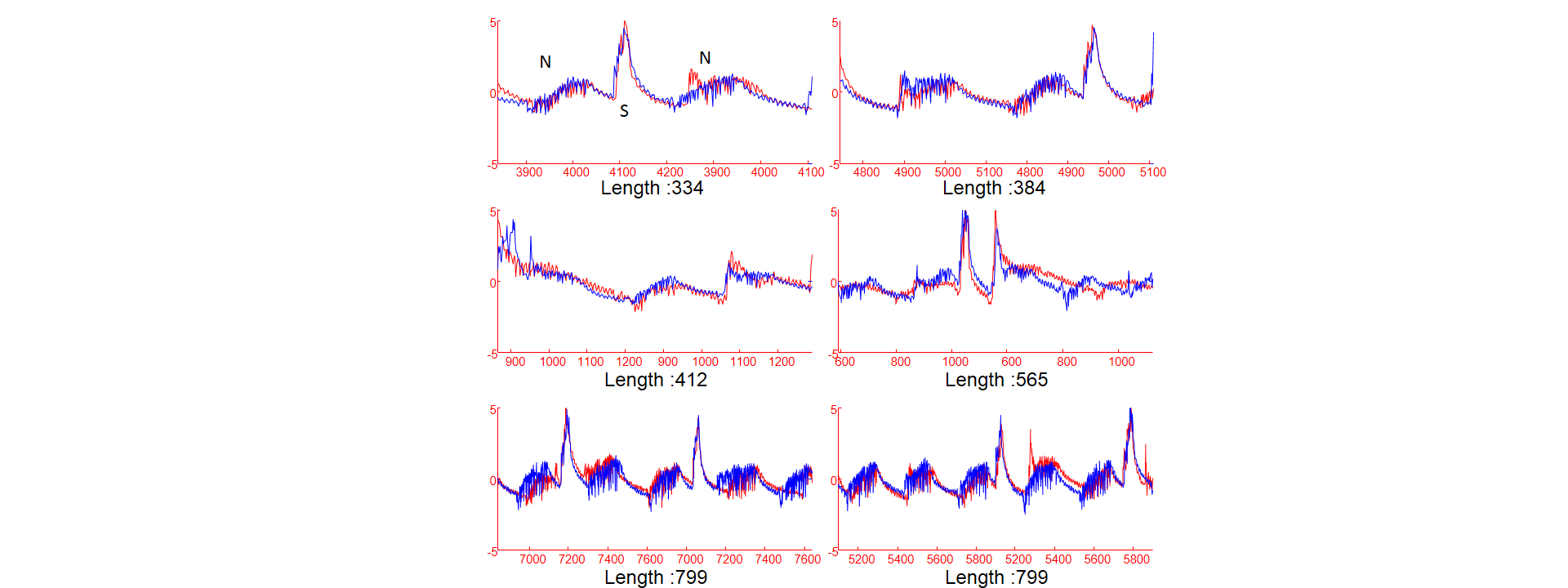|
This is a supporting page of the
paper Enumeration of Time Series Motifs of All Lengths by Abdullah Mueen
| |||
Time Series Motifs are repetitions in time series that are too similar to happen at random and thus, provides evidence of low-noise segments of the time series. Finding repetitions for a wide range of lengths is a challenging problem and has not been addressed so far where the motifs are the most correlated segments of all the other segments of the same length. The trivial way to enumerate the motifs of all lengths can be to repeatedly use the best motif discovery algorithm for fixed length. In this work we have shown an algorithm that finds the best repetitions/motifs for the range of lengths in a time series and it runs faster than the smartest available solution. The following figure describes a set of motifs found in an EEG signal shown at the top.  |
|||
|
Errata | |||
| The pseudocode in the paper has an error in line 4. Instead of (m+1)/m it should be m/(m+1). Similarly in lines 13 and 18, it should be (j-1)/j instead of j/(j-1). | |||
|
Code and Executables | |||
|
We
have a C# code and a Matlab wrapped code to plot the motifs. Please email me for the passwords. 1. C# code: The code is very easily convertible to c++ if you want to. There is no external dependency to platform specific libraries and there only two files. 2. Matlab wrapped code: Produces plots as shown in the paper. It needs windows platform to run the .exe file.
| |||
|
Spreadsheet of Experimental Results | |||
|
We have compiled results of all the experiments in a spreadsheet. All time measurements are in seconds | |||
|
Datasets | |||
| |||
|
Context Recognition Data | |||
|
The dataset has been taken from here. The
time series used for the paper is Environment: |
 |
||
|
JustDance Data | |||
|
The dataset is taken from the following paper and we acknowledge the generous support of H. Pohl for providing the data. The choreography retrieval is a special case of more general state sequence reconstruction problem. We aimed at seeing if the motifs are generated from the same motion or motion-transitions. Wr achieved 86.5% precision. H. Pohl and A. Hadjakos. Dance pattern recognition using dynamic time warping. In SMC 2010 Proceedings, pages 183–190, 2010. |
 |
||
| EPG Data | |||
| The data is here. Motifs of different lengths show the hierarchy of patterns. |  |
||
|
This
page is created by - | |||